(Continued from part 1)
N. P. Upadhyaya ( Aryal)
Kamal Koirala further states in his fresh interview that India has a dozen of Nepali leaders functioning as Sikkim’s Lendhup Dorje-the one “traitor” who assisted Madame Indira Gandhi to annex independent and sovereign Sikkim in the mid seventies.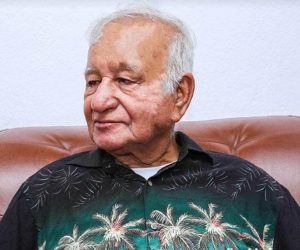
These Lendup Dorjes’, as per Kamal Koirala, are well entrenched in Nepali politics both in the Nepali Congress and the UML.
An easy escape from these presumed traitors appears difficult if not impossible.
If one were to believe Koirala’s explosion then we have to accept that the current leaders ruling the country, left or right, resemble the “anti-national deeds” of the Kazi Lendhup Dorje.
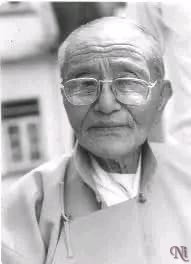
Such accusations on Nepali leaders are not new in that even one of the signatory of the Delhi designed 12 point agreement hurls allegations saying that to save himself, the rest were posted and recruited men of Delhi in order to dissolve the country a la Sikkim.
Perhaps it is for these continued political reasons that I took the nerve to publish this book for the knowledge of my readers both within and without as to how India has captured the Nepali politics, both internal and external.
For a section of the political circuit, India is a menace for Nepal.
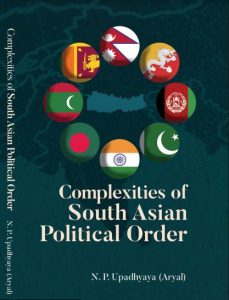
The present book “Complexities of the South Asian Political Order” in essence talks about the Indian interventions or say meddling in Nepal and other smaller South Asian nations as and when these nations undergo troubled waters.
Even immediate rival Pakistan too appears to have been infested with the RAW virus of late.
Rumors have it that some big and vibrant media men in Pakistan much like Nepal have been tacitly working for the Indian regime by weakening their own government in Islamabad.
So much so that countries like the Maldives, Sri Lanka, Afghanistan, Bangladesh too at times experience the RAW menace in their countries at par with what Nepal experiences since the beginning of India gaining Independence from the East India Company as back as in 1947.
A “Indian military out” campaign has rocked the Maldives in recent years under former President Abdulla Yameen. However, Indian entrenchment has not decreased yet.
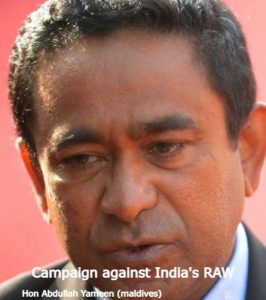
In the troubled Sri Lanka, the Indian Prime Minister pressed the new Colombo set up to award a power deal to his business friend Gautam Adani.
The Modi-Adani connections were best illustrated by the American billionaire George Soros at the recently held Security Conference in Munich, Germany.
It made no difference to PM Modi.
However, Modi is currently being challenged/contested by rival-Rahul Gandhi of the Indian national congress.
The present book just published (early this year) talks at length over the facts that have generally been ignored, just as the one I mentioned in the above paragraphs, by my equally competent professional colleagues.
Bluntly speaking, I have included those concerns which generally my contemporaries pay no heed to for some inexplicable reasons.
However, I have tried to uncover those overlooked theme(s) which happen inside India, for example, on Kashmir, hatred of Muslims, on some sort of religious fanaticism that make headlines even in the international media and Indian interventions in Sri Lanka, the Maldives, Bhutan and Bangladesh.
I generally quote Zainal Abedin-a scholar from Bangladesh who some two years ago bluntly told his friends attending an international webinar that he would wish to see a grand coalition of some Muslim countries to fight against the RAW hazard in a collective manner.

If one were to believe Zainal Abedin then his country-B’desh is being run tentatively by the Delhi regime.
Sources say that under Delhi’s excessive pressure, Dhaka is likely to join the US designed Quad.
Perhaps this speaks more than one could write and explain.
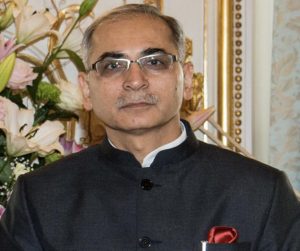
Nepal’s case is more acute in that it could not be a mere conjecture that the Nepali Congress party announced its Nepal President candidate only the day after the return of Indian viceroy Binaya Mohan Quatra from Kathmandu who had just came to Kathmandu presumably only to “instruct” his men in Nepal to appoint Delhi’s trusted and tested man for the post of Nepal President.
And look Ram Chandra Poudel is now our President who upon ascending to the Presidential post recited a poem in Hindi ( in fact it was a Shayari) and unconfirmed reports say that he intends first to award “citizenship certificates” to those Indians who need it.
However, this needs remains yet to be verified but the fact is that Mr. Poudel’s elevation as Nepal President has something mysterious underneath. Has the Indian choice prevailed while electing/selecting Nepal President recently”?
In addition, the sitting Nepal Prime Minister talked first to the Indian Television upon his taking up the coveted seat saying that “I feel proud of being interviewed first by an Indian TV channel and that his first visit shall begin right from India.
In his bid to serve the Indian establishment, as is presumed, he deliberately avoided his visit to China to attend the Boao international conference which perhaps clears the illusion of the Chinese side and proves the fact that “Nepal Communists even with the name of Chairman Mao” work for India instead of having some soft corner for China-the adjoining country in the North.
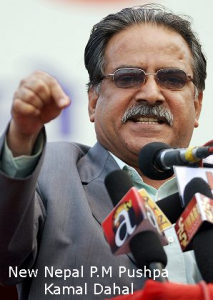
To add insult to injury, Krishna Bahadur Mahara-a Maoists leader of the second rank after Prachanda of the “New Delhi hibernation days” just the other day spoke his inner suffocating mind in Nawalparasi that “Comrade Prachanda, Sher Bahadur Deuba and K. P. Oli were all the “puppets of some “invisible” alien forces.
Mahara says that someone invisible rules Nepal but seated on the chair aere Nepali nationals.
I feel saddened that even if my party chairman Prachanda is the current Prime Minister, but yet we are being ruled not by our own Prime Minister and that the “invisible forces” were in control of entire Nepali politics.
K. B. Mahara is the one who has abhorrence towards the Hindu religion. He is close to India and China both. What fun that it is?
Mr. Mahara once was found indulged in having an “illicit” relations with a lady?.
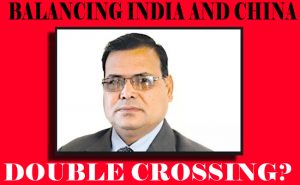
In addition, he was also found talking to one Chinese official in Chengdu. Mahara was asking “hefty financial” amount for buying some Nepali parliamentarians. The audio, unfortunately got leaked.
But yet he is equally close to RAW officials in Delhi, rumors have it.

So Mahara is recognized by both: India and China.
Isn’t it a Karishma? Certainly it is.
All these political anomalies associated with the highhandedness of the neighboring Indian regime over these years made me to think on publishing a book, early 2022, on my own in order to expose the excessive interferences and the interventions of the alien forces, mainly that of India, in Nepali politics more so after the ouster of Nepali monarchy around the year 2008.
Why the Nepali Monarchy was overthrown is now anybody’s guess.
I say that Nepal is already an undeclared province or for that matter the Indian protectorate much below Bhutan comparatively.
Bad days for Bhutan are nearing as this tiny Himalayan Kingdom is all set to meet the Chinese to sort out the border problems.
India, notably, controls both defense and the foreign policy of Bhutan.
At least I have no illusion on this count.
The loser is China ultimately as Indian say in Nepali politics has quadrupled after the ouster of Monarchy.
China is the permanent loser in Nepal as China collaborated with the Indian diplomats (the then Foreign Secretary of India Shyam Saran) in Beijing and the two arch rivals consented for the overthrow of the Nepali monarchy.
 The Chinese slide began in earnest the day it ignored the Monarchy.
The Chinese slide began in earnest the day it ignored the Monarchy.
It is this blunder that China has now no reliable partner in Nepal.
Notably, Monarchy in Nepal had kept India at a distance and taken proper care of the Chinese interests as well such as the “one China policy”.
All such political reasons forced me to bring out a book: “Complexities of South Asian Political Order”.
By the way, very recently, China in close cooperation with the Russian federation and the Indian regime are thinking of restoring the abandoned Monarchy.
All these three countries conclude that Nepal must be a zone of peace which is only possible when the monarchy is restored.
It is time that the US too extends its support in restoring the Monarchy and ensures its desired place in Nepal.
In the meanwhile, the call for the restoration of the now defunct monarchy has gone up with several pro-monarchists and also those who feel betrayed by the “republican leaders in this redundant republican order” elevated by India and some distant alien forces too have joined the campaign for the restoration of Nepali monarchy.
Surprising of all that PM Modi even has taken personal interest in the restoration of Nepali monarchy keeping an eye on the approaching elections and the Hindu votes.
The King reportedly met PM Modi during the time when he was “missing” in Nepal.
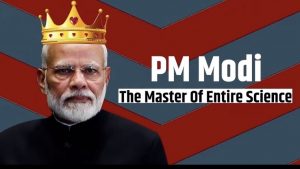
Sources say that RAW men in Siliguri, West Bengal, India, escorted the King and made him land in Delhi and thus he met PM Modi, rumors have it.
PM Modi now needs the King of Nepal more than the otherwise. The King has full backing of PM Modi and Chief Minister Aditya Nath Yogi-the CM of Uttar Pradesh.
Yogi is a devout Hindu and is a Muslim hater.
Back in Nepal, former Prime Minister K. P. Oli is also of the view that Nepali monarchy has to be restored.
So revealed Durga Prasai-now a committed pro monarchist business pharmaceutical man having close links with KP. Oli at a gathering in Nepal in recent days.
Prasai also declared that KP. Oli is dead against the federal structure as well.
Just on April 3, 2023, a colossal gathering held in Inaruwa district, close to Biratnagar, was organized by some sane people who now prefer the reinstatement of the monarchy.
So much so that encouraged by the mammoth gathering King Gyanendra for the first time after his ouster spoke at length on the deteriorating situation of the country and sent enough signals to the current leaders to “behave” and that he was in knowledge of the entire bungling of the leaders manning this imposed Order since his ouster.
“ I have been keenly watching the irregular behavior of the leaders that has been tearing apart the national fabric and that we can’t tolerate any further slide of the country’s national independence and sovereignty”, said the King while addressing the Ineruwa gathering.
To recall, the United States of America is one of the oldest reliable friends of Nepal.
The US is thus advised to read the article of November 16, 2022, where three Indian scholars, Vedanta Choudhary, Avinav Singh Khatri and Sankalpa Chakrabartic ave clearly stated that “ India welcomes the United States’ engagement with Nepal, as long as such dialogue between Kathmandu and Washington either promotes New Delhi’s interests or promotes the interest of either party without causing harm to New Delhi’s interests in the region”.
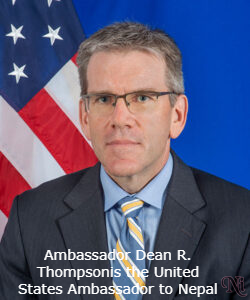
The gist of the article is India needs the US in Nepal only to add to the problems of China as China will have to deal with two antagonist powers-the India and the US in Kathmandu.
India also hopes that the US entry into Nepal would divert the attention of China from India which means India is afraid of China and concludes that China may repeat the 1962 insulting defeat.
If and when the US is in Nepal, China’s threat shall be diluted, this India thinks.
Here is an oblique message to the US and China to understand the Indian double play.
It is these shortcomings associated with excessive foreign interference, mostly from India and the European Union nations (some only), I dared to bring out the book so that the people at large could understand better as to what we lost over these years in terms of national prestige and sovereignty.
The book also talks in detail of the Indian interventions at all levels in Nepali politics after the “designed ouster” of the monarchy.
I have touched upon the continued land encroachment of Nepal at various places across Nepal more so in Kalapani, Limpiyadhura, Lipulekh etc.
I have made stories of those news items which generally my professional colleagues take no notice of deliberately for some mysterious political reasons.
Summing up, the book “Complexities of South Asian Political Order”, apart from Nepal also deals with events wherein India has intervened into the internal affairs of the smaller South Asian nations, mainly, Bangladesh, the Maldives, Sri Lanka, Afghanistan and Pakistan as stated in earlier paragraphs.
Basically this book is a collection of my articles which I wrote during the year 2018-2019 on South Asian regional countries.
It was this time when my health conditions were not good.
I firmly believe, with my five decades long association in this field, that the USA has to review its South Asian policy wherein the Super Power has almost deputed the South Asian “bad boy” as regional police which is great injustice to the smaller South Asian nations.
The USA bluntly speaking is looking at the South Asian nations through the “Indian lens” which is what the regional countries do not want to continue for long.
The US can look on its own as its diplomats are well posted in these countries.
The US special treatment to India is unacceptable as such policy only favors India and pays no heed to other regional countries.
The US is thus advised not to forget its Cold War time ally-Pakistan in order to keep regional balance intact.
The balance is in India’s favor as of now.
If and when Pakistan is ignored, the Russian Federation which of late appears annoyed by the Indian regime’s double play may inch closer to Pakistan in order to have a credible ally in South Asia which ultimately may allow the Russians to enter into the South Asian region in a grand manner.
Russia too is a good friend of Nepal and has contributed much in the past for Nepal’s road development, for example plus several factories are to its credit.
Needless to say, as the rumors have it that Pakistan is already importing Petroleum products from the Russian Federation. It is a good start for all political reasons.
RF and Pakistan are likely to come closer in the near future as China shall in all likelihood vote for Pakistan for multiple reasons.
Even an alliance of RF, China and Pakistan may take shape time permitting and should the new political events take a new turn.
Needless to say, China and the RF are already closer which apparently became clear when President Xi Jinping visited Moscow last month in March 2023.
The US must understand the gravity of the unfolding politics more so after China’s mediatory role that brought the two estranged countries Iran and Saudi Arabia closer.
This way, China has made already deep inroads in the Gulf/Middle East politics.
China is all prepared to enter deep into the core European nations. The French President Emanuel Macron is visiting Beijing.
This has abundant signals for the US and the Quad.
And Pakistan is close to all these countries in this part of the world.
New alignments or for that matter realignments are in progress which has been necessitated by the overly stretched Russia-Ukraine war.
Obviously, countries across the globe are busy in studying profitable alignments or realignments.
Thus it is a challenging period for the world powers.
I assure my readers, both within and without, that my next book shall have the stories written by me during the year 2019-2020 and the process shall continue for some more years, if the blessing of the Almighty remains intact.
I hope you will enjoy reading the book. My highest regards to you all. That’s all.
-Concluded: Upadhyaya.
# This article was first published in the ehimalaya Times online edition.
